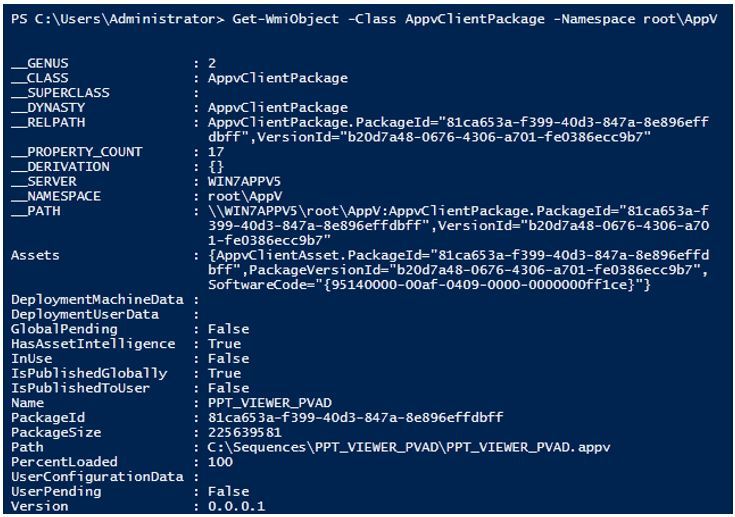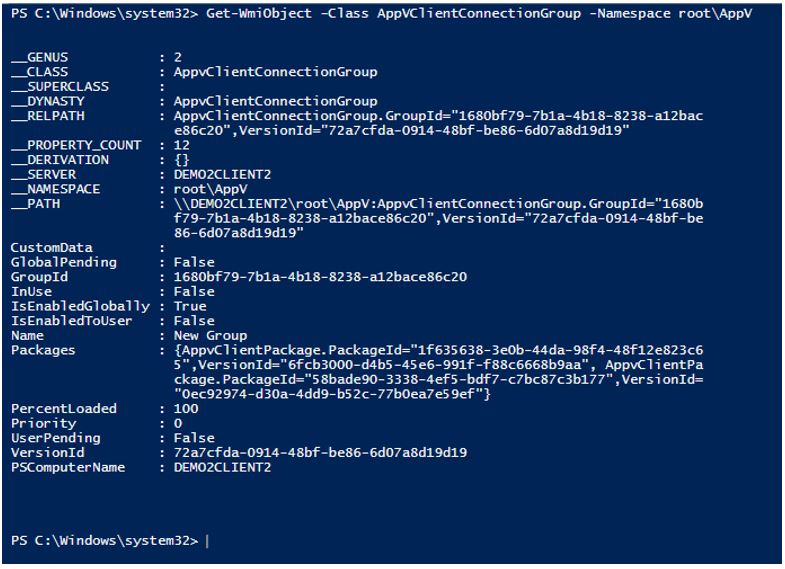App-V 5: MSI Wrapper Caveats (Oh, and App-V WMI classes are different in 5.0)
For those enterprises using 3rd-party ESD (Electronic Software Distribution) products to deploy and manage software, use of the MSI-wrapper makes it easy to incorporate these types of applications into their environments. In App-V, when you “install” a virtual application using the MSI wrapper, all that is being done are custom actions that add and publish the package globally to all users on that machine. In addition, it will place an entry in the “Program and Features” list (formerly Add/Remove Programs.) This entry in the programs list is pretty much the difference between using the MSI to publish the application instead of manually using the PowerShell AppV cmdlets. Because of this entry, it is also advised to always use the programs list (or the msiexec /uninstall command) to remove the application instead of the manual PowerShell commands in order to prevent an orphaned entry from remaining.
It is also important to note that the MSI checks are more resilient in v5, where if you try to uninstall an application that is currently in use, it will echo a 0200000508 error:
Following the warning, the uninstallation stops, the package will remain and the entry will remain in the programs list. This is different from 4.6 where the entry would get removed while the virtual application would remain published and you would have to manually remove the application using SFTMIME cleanup commands. The specific error in 4.6 would be:
The Application Virtualization Client could not complete the operation.
The operation failed to complete because the package is still in use. Report the following error code to your System Administrator
Error code: xxxxxx-xxxxxx04-00001808
In 4.6, once you got the 1808 error, at this point you had to remove the application using the manual SFTMIME command (SFTMIME DELETE PACKAGE) https://technet.microsoft.com/en-us/library/cc843829.aspx
If you are using a 3rd-party ESD (Electronic Software Distribution) product to manage applications, you can query the WMI namespace for App-V to determine if a package is still in use in order to prevent this from happening.
If the package is indeed in use, you can then use the Stop-AppVClientPackage and/or Stop-AppVClientConnectionGroup cmdlet although the standard caveats apply with regards to open documents and unsaved information.
Speaking of WMI
In V5, the WMI classes are now located in a different namespace (\root\appv) and the classes have been expanded to align with PowerShell objects. The classes are:
- AppVClientPackage
- AppVClientApplication
- AppVClientConnectionGroup
You can use PowerShell, VBScript, WMIC, or native/managed code to query WMI to get information about virtual applications, packages, and connection groups. For example, you can inventory packages using these PowerShell commands:
$VPackages = Get-WmiObject -Class AppvClientPackage -Namespace root\appv
$VPackages | Format-List -Property Name, InUse, PercentLoaded
What is really great about App-V 5.0’s WMI is the inclusion of Connection groups which allows extensibility for management of not only applications, but super-bubbles (especially with Configuration Manager 2012 SP1 - which actually refers to them as virtual environments.)



